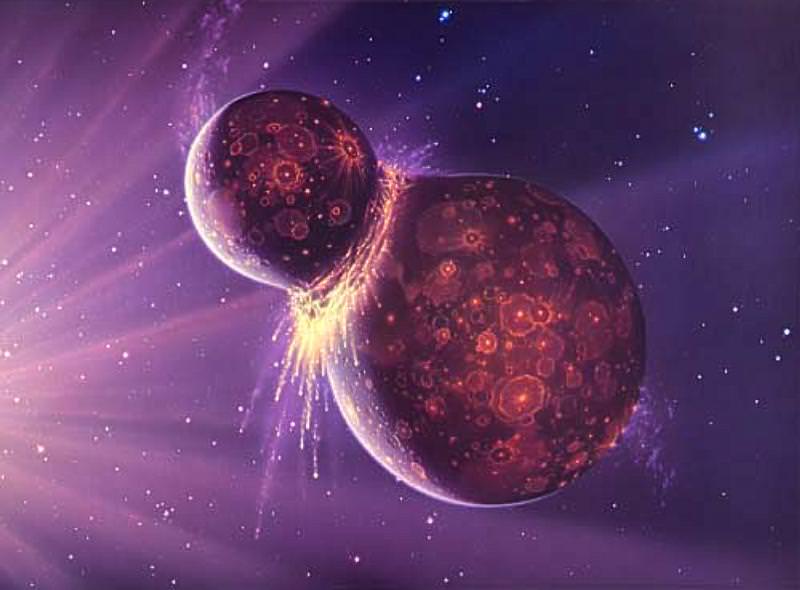Total Lunar Eclipse - December 21, 2010

Hot Plasma Explosions Inflate Saturn's Magnetic Field

String of Peaks Found on Titan Could be Cryovolcanoes

Darwin vs. the Sun

Qatar Led Team Discovers Exoplanet

Did Iapetus Have Its Own Mini Moon?

'Ring' in the Holidays with New Hubble Bubble Image

Music From Space: DIY Satellite Will Capture Sounds of Ionosphere

The Longest Martian Odyssey Ever

SpaceX Looking to Launch Next Dragon Spacecraft - to the ISS

Breaking News: Space Shuttle Discovery to Be Rolled Back from Launchpad

Voyager 1 Has Outdistanced the Solar Wind

Ancient Eclipse-Predicting Computer Rebuilt in Lego
Asteroid Scheila Sprouts a Tail and Coma

First Four Exoplanet System Imaged

Incredible Engineering Camera Views of the Space Shuttle in Action
Astronomy Without A Telescope - Forbidden Planets

Akatsuki Update: Fuel Pressure Drop Likely Caused Insertion Failure

Nanosail-D Update: Things Look Grim

WISE Captures an Infrared Shock Wave

Satellite Images Show Dueling Snowstorms in the US and UK

How Are You Celebrating the Year of the Solar System?

Here's Your Chance To Spread the Joy of Astronomy Around the World

Universe Today Syndication Policy (Steal Our Content... Please)

Window to the World

Forests Might Be Detectable on Extrasolar Planets

What is Conductance?

Concave Lens

Carnival of Space #180

What is the Coefficient of Friction?

What Causes Wind?

What did Isaac Newton Invent?

Largest River In The World

Apollo 12 anniversary celebrated at Martian Crater as Opportunity blazes ahead

Get Ready for the Geminids -- In the Sky and Online!

Taking a Galaxy's Temperature

SpaceX Reveals Dragon's "Secret" Payload

Late, Big Bombardments Brought Heavy Metals to Earth

Venus Has a Moon?

The SpaceX Business Plan: Help Build a Spacefaring Civilization

Gallery: Dragon/Falcon 9 Launch and Recovery Photos, Videos

Moon 3-D

Where In The Universe Challenge #128

The Future is Now: SpaceX Flight 100% Successful

Stunning ISS View of Volcanos on Earth

WASP-12b: A Carbon Rich Exoplanet

SpaceX successfully launches Falcon 9 carrying Dragon spacecraft

New Look at an Ancient Swarm of Stars

Akatsuki Fails to Enter Orbit of Venus

 Universe Today
Universe Today